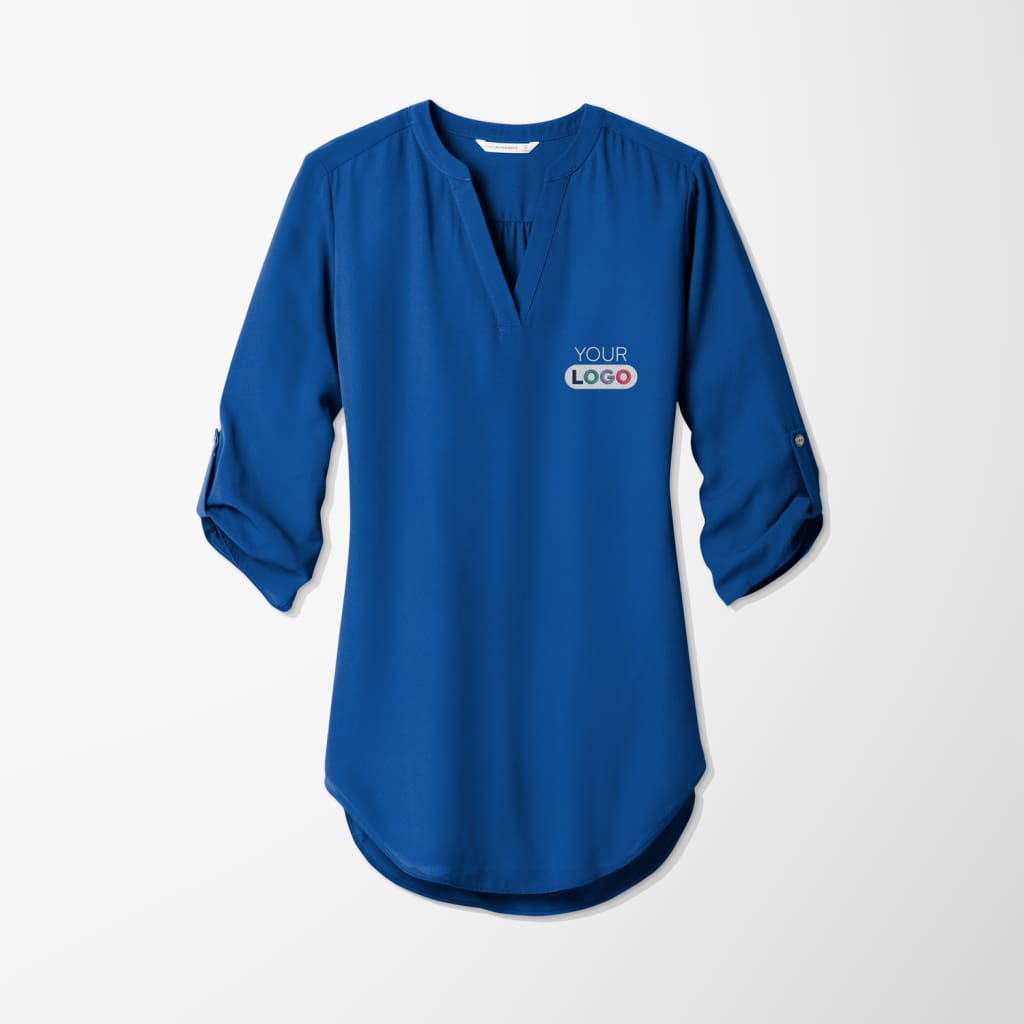Is Branded Clothing Really Better Because of the Fabric?
Is Branded Clothing Really Better Because of the Fabric?
Blog Article
Understanding Clothing: The Significance of Textile Options in Your Wardrobe
The selection of fabric in clothes plays a crucial function in both visual appeals and capability. Various materials provide varying levels of convenience, breathability, and toughness, straight influencing the user's experience. Comprehending these nuances can boost one's wardrobe noticeably. Several neglect just how these selections can impact not just individual style, however also sustainability. What material decisions could redefine your closet and straighten it with both design and obligation?
The Role of Material in vogue and Functionality

Common Fabric Kinds and Their Attributes
When selecting apparel, recognizing the qualities of usual fabric kinds is necessary for making educated selections. Cotton, a widely-used all-natural fiber, is known for its breathability, convenience, and soft qualities, making it appropriate for sportswear and everyday garments. Bed linen, another all-natural alternative, flaunts outstanding moisture-wicking buildings and a distinctive texture, ideal for cozy climates.Wool, commonly favored for its warmth and durability, differs in excellence; merino wool is soft against the skin, while coarser kinds are utilized for outerwear. Synthetic materials like polyester and nylon use resilience and resistance to wrinkles, making them prominent for activewear and traveling garments. Ultimately, blends, which combine artificial and natural fibers, can enhance capability while keeping comfort. By acknowledging these material features, individuals can select garments that straightens with their way of living and aesthetic preferences.
Breathability and Convenience: Choosing the Right Fabrics for Different Climates
Picking the best materials for various environments can significantly enhance comfort and general wearability. Breathable materials are vital in hot environments, as they allow air flow and moisture evaporation. Fabrics such as cotton, linen, and moisture-wicking synthetics effectively attract sweat away from the body, keeping the user cool and completely dry. On the other hand, in cooler climates, thicker textiles like woollen or fleece supply insulation while keeping breathability, making sure warmth without overheating.Additionally, the choice of material weight plays an essential function; lightweight materials are better for summertime, whereas larger alternatives are suited for winter months wear. Understanding the distinct buildings of each textile enables individuals to dress properly for varying climate condition. Inevitably, choosing breathable and comfy fabrics customized to details environments can greatly improve everyday convenience and enhance the total experience of wearing garments.
Toughness and Treatment: How Textile Influences Durability of Your Closet
Picking the appropriate materials can substantially affect the resilience and treatment needs of a closet. Fabrics such as cotton and polyester are understood for their durability and convenience of upkeep, making them perfect for day-to-day wear. In contrast, fragile products like silk and shoelace require even more cautious handling and specialized cleansing methods, which can enhance the moment and initiative required for care. Branded Clothing.Durability is likewise affected by the fabric's weave and finish; securely woven materials have a tendency to stand up to wear and tear far better than loosely woven choices. Additionally, synthetic blends usually provide boosted toughness, integrating the most effective high qualities of multiple fibers.Understanding the treatment instructions for each and every material is necessary, as incorrect cleaning or drying can bring about early wear. Ultimately, selecting durable products can lead to a longer-lasting closet, minimizing the frequency of substitutes and contributing to a more lasting fashion selection
The Impact of Textile on Fit and Silhouette

Lasting Material Options: Making Eco-Friendly Choices
The impact of material expands past fit and silhouette to incorporate environmental variables, prompting a growing interest in sustainable fabric options. Environment-friendly materials, such as organic cotton, hemp, and Tencel, are gaining grip amongst customers who prioritize sustainability in their closets. These materials are usually created with less chemicals and water, minimizing their environmental footprint.Additionally, recycled materials, made from post-consumer waste, offer an ingenious remedy to the fabric industry's pollution trouble. Brands progressively welcome transparency in their sourcing methods, permitting customers to make informed choices Source about their purchases.Choosing lasting materials not just supports moral techniques yet additionally encourages the apparel industry to take on even more accountable production approaches. As understanding of ecological issues climbs, individuals are prompted to review the long-term influence of their fabric options, cultivating an activity in the direction of an extra eco conscious and lasting method to style.
Raising Design: Just How Fabric Can Transform an Attire
While several may focus on color and cut when choosing a clothing, the selection of material plays a necessary role in raising design and improving total appearance. Different materials communicate distinct moods and messages; for instance, silk exhibits deluxe and sophistication, while jeans uses a casual, relaxed ambiance. The texture and drape of a textile can significantly change the shape, with organized materials offering a refined look and softer ones producing a more fluid, unwinded aesthetic.Moreover, the weight of the material affects wearability throughout periods. Light-weight fabrics like bed linen and cotton are excellent for summer season, while larger materials such as woollen and velvet supply warmth and beauty in colder months. Understanding fabric homes, such as breathability and stretch, also empowers people to make informed selections that boost convenience without jeopardizing design. Ultimately, the ideal material view it now can transform a clothing from regular to phenomenal, making it a crucial consideration in any closet.
Regularly Asked Questions
Exactly how Do I Recognize the Fabric Material of My Clothes?
To identify textile web content, one can check out treatment labels, conduct burn examinations for fiber identification, or seek advice from material swatches. These techniques assist set apart materials, ensuring notified choices for garments care and upkeep in everyday wear.
Can Textile Selection Affect My Mood or Self-confidence?
Textile selection can considerably impact an individual's mood and self-confidence. Branded Clothing. Specific materials may evoke sensations of comfort or beauty, while others can really feel restrictive or uncomplimentary, ultimately influencing self-perception and emotional wellness throughout the day
What Fabrics Are Finest for Delicate Skin?
For individuals with delicate skin, natural materials like cotton, bed linen, and bamboo are commonly suggested. These products are breathable, hypoallergenic, and less most likely to trigger irritability, making them appropriate options for convenience and skin health and wellness.
How Do I Effectively Clean and Look After Different Fabrics?
To appropriately care and clean for various materials, one need to take into consideration each material's certain needs, consisting of temperature setups, detergents, and drying out approaches, making certain durability and keeping the textile's initial qualities for perfect usage.
Are There Specific Fabrics for Athletic or Performance Put On?
Sports or efficiency wear frequently uses fabrics such as spandex, nylon, and polyester. These products are made for moisture-wicking, breathability, and flexibility, enhancing movement and convenience during exercises while providing toughness and assistance. Conversely, in colder climates, thicker materials like woollen or fleece supply insulation while maintaining breathability, making sure warmth without overheating.Additionally, the selection of material weight plays a crucial duty; lightweight textiles are preferable for summer, whereas much heavier choices are fit for winter season wear. In comparison, fragile materials like silk and shoelace require more cautious handling and specialized cleaning methods, which can increase the time and initiative required for care.Durability is likewise affected by the fabric's weave and coating; snugly woven materials often tend to resist wear and tear much better than loosely woven alternatives. In comparison, stiff fabrics can limit movement yet provide a traditional, sleek look.Moreover, the thickness and structure of the material can affect the visual assumption of body shape. The effect of material extends past fit and silhouette to encompass environmental elements, triggering an expanding passion in sustainable fabric selections. The appearance and drape of a textile can dramatically modify the silhouette, with structured materials offering a polished look and softer ones creating an extra fluid, kicked back aesthetic.Moreover, the weight of the textile influences wearability across seasons.
Report this page